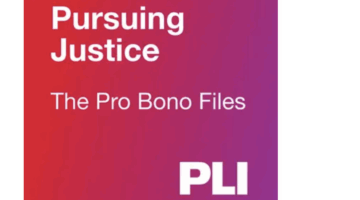 In my role advising attorneys and litigation finance firms, I often get people asking for advice on how to get their cases funded. So, what makes for a case which might be viable to receive funding from a third-party litigation funder? The answer varies of course — different cases have different merits, but there are some broader conclusions that can be drawn as well.
In my role advising attorneys and litigation finance firms, I often get people asking for advice on how to get their cases funded. So, what makes for a case which might be viable to receive funding from a third-party litigation funder? The answer varies of course — different cases have different merits, but there are some broader conclusions that can be drawn as well.
Almost all cases cases that I see large funders take have the characteristics below. (There are many firms in the small/personal injury case market with a fairly standard vetting process based on a simple interest rate rather than a multiple approach, and a few firms in the mid-sized case market with different standards, but those are a subject for a different column in the future).
1.) Large commercial cases with good fundamentals making them strong cases

3 Ways Lawyers Are Finding New Efficiencies With AI
Those who’ve adopted legal-specific systems are seeing big benefits.
2.) High enough expected investment to settlement ratio to support all parties involved — generally a minimum of 3X, though economies of scale matter a lot — smaller cases need higher multiples to make them work.
In order to ensure only viable cases which meet these criteria are taken on, the first step in being funded is a diligence process to determine whether or not the case has a realistic chance of being fundable. Before a claimant submits a case to a funder though, they need to make sure they have all of their paperwork in order, and that the presentation of the case is structured properly.
Unfortunately, just like any investment pitch in any area of finance, presentation often matters as much as the actual content of the investment. If a claimant don’t know how to present their case in a compelling and attractive way to an investor, they should get help. Otherwise, chances are that it won’t get funded.
The initial assessment by a funding firm considers many aspects of the case.

Pursuing The Pro Bono Story: A Conversation With Alicia Aiken
This Pro Bono Week, get inspired to give back with PLI’s Pursuing Justice: The Pro Bono Files, a one-of-a-kind podcast hosted by Alicia Aiken.
First, is the case a commercial dispute?
Is the case in a domestic jurisdiction covered by common law or an internationally recognized arbitration center?
Is there a legal counsel currently assigned to the case and if so have they done a thorough analysis of the case?
Are patent matters involved, and if so how many?
Is this an investor state arbitration matter, if so how far did the investor develop the investment?
Is this case substantial enough to support outside financing, including realistic damages which can compensate all parties involved?
If the case satisfies the initial requirements it moves on to secondary consideration where the funder performs diligence upon the case bringing in legal experts and evaluates the economics of the case (this second aspect is where legal funders often fall short in taking a robust approach in my experience).
To evaluate a case for further review is to determine whether the merits of the case indicate a substantial probability of success if provided with access to the fullest measure of legal resources. This can be done using quantitative or qualitative means.
Next is an evaluation of the litigator retained for the case. Only attorneys with relevant experience and proven track records who have demonstrated a strategic approach to litigation are considered fundable.
Next, funders consider whether the proposed damages are realistic based off available and verifiable evidence. Additionally, is the party the action is being brought against financially stable.
Finally, if the case were to be successful is the losing party possessing of sufficient resources to pay the proposed damages, and if so, is there a realistic means of collecting the damages?
If the above criteria are met, funders will then analyze the economics behind the case including the proposed budget, the attorney’s commitment to the case, the damages, and the ratio of budget to expected return. The budget must be realistic and consider the full costs to take a case through trial.
The legal counsel for the case must be willing to commit to the case by agreeing to discounted fees or a partial contingency fee agreement. Compensatory damages must be sufficient to support the case without needing to rely upon extraordinary damages such as punitive damages.
Getting cases funded is difficult — not as difficult as securing a venture capital investment for instance, but difficult nonetheless. Roughly 95% of cases that seek funding do not receive it — that’s probably a result of failures and mistakes by both funders and claimants though. Overall, claimants can maximize their chances of getting a suit funded by being able to explain how their case fits the criteria above, and having clear documentation and materials to support that view.
Michael McDonald is an assistant professor of finance at Fairfield University in Connecticut. He holds a PhD in finance. Michael consults extensively with organizations ranging from Fortune 500 companies to start-up businesses on financial matters through Morning Investments Consulting. Michael has served as an expert witness in legal disputes, and is an arbitrator with the Financial Industry National Regulatory Authority (FINRA). Michael can be reached at [email protected].